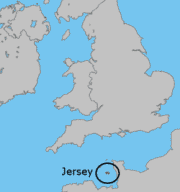An interesting article on MoneyExpert.com reveals that 16% of women have had a crash or near miss as a result of applying make-up on the move!

It’s worth a reminder of the usual men vs. women argument, where women claim that they have fewer accidents than men. As I’ve pointed out many times, what with the number of men who drive compared to women, where they drive, how much they drive, why they drive, and so on, the situation is far too complex to just lock on to the “more accidents” figure. And this article seems to prove that.
Diamond – and insurance company which specialises in insuring women drivers – 25% of women put on make up whilst driving, and of those 1 in 10 take their hands off the wheel completely in order to do it!
This in itself is shocking, but the article goes on to say that women treat their cars as second homes and eat breakfast, brush their hair, and read the newspaper whilst driving.
It goes on with more frightening statistics, saying that 47% admitted to checking text messages, a third brushed their hair, a third ate breakfast, and a third drink hot drinks.
It gets even worse, with 18% admitting checking emails and 1 in 10 admitting to reading the newspaper.
The article is a little unclear when it goes on to say that 60% of women apply make up whilst driving (contradicting the 25% at the beginning), but it says that 90% of those who do it agree that it is dangerous.
Two thirds of females have applied make-up whilst having passengers on board, and a third have done it with children.
Diamond’s managing director says:
It’s shocking that quite so many women admit to doing these tasks while driving, We all have busy lives but applying your make-up, or checking emails, when you’re driving is dangerous as it means your full attention is not on the road ahead.
I wonder if this is preparation for the impending insurance hikes for women? Diamond has apparently marketed itself on lower premiums for women in the past, of course.
The results just confirm that women drivers are dangerous in their own way, and it is quite right they should be paying insurance premiums that go along with it.
I see it many times daily. The first thing many women do when they stop at traffic lights is lean over and play with their hair. And they often have the interior mirror adjusted so you can see their cleavage – which means they have it adjusted so they can look at themselves while they are driving!







